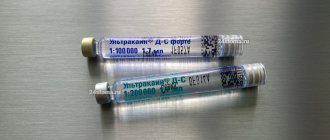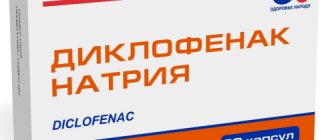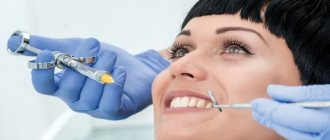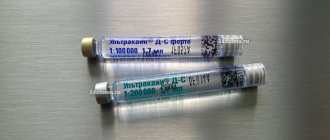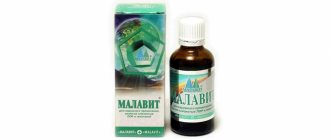Pharmacodynamics and pharmacokinetics
Articaine is a thiophene and has a local anesthetic effect. Used for conduction and infiltration anesthesia . Articaine undergoes hydrolysis in a slightly alkaline environment of tissues with the release of a base that has lipophilic properties, and therefore easily penetrates through the cell membrane into the nerve fiber.
By influencing receptors, it blocks the delivery of sodium ions into the cell and the conduction of impulses along nerve fibers. The effect of the drug is observed immediately after its administration and lasts from 1 to 3 hours. Efficiency is reduced in acidic environments.
When administered intramuscularly, Cmax is achieved within 20 to 40 minutes.
When introduced under the mucous membrane of the oral cavity, it exhibits high diffusion ability.
95% bound to plasma proteins.
Metabolized in the liver, T½ is approximately 60 – 80 minutes.
Within 6 hours, 54 - 63% is excreted by the kidneys.
Can penetrate the placental barrier (to a lesser extent than other local anesthetics); it penetrates the blood-brain barrier in small quantities. It is practically not excreted in breast milk.
Pharmacokinetics and pharmacodynamics
Articaine provides a high degree of action and a minimal number of adverse reactions of the body. Has minimal toxicity. The maximum concentration after administration into the submucosal membrane of the oral cavity is observed 25 minutes after administration. With infiltration anesthesia, the effect is noted after 1-2 minutes, with conduction anesthesia - after 2-2.5 minutes.
Its transformation mostly occurs in the liver; the inactivation process also occurs in the bloodstream and tissue structures under the action of blood plasma enzymes (cholinesterase). The resulting metabolites do not have an anesthetic effect. Binds to blood proteins and is excreted by the kidneys. On the first day, about half of the administered dose is eliminated.
Contraindications
- children under 4 years of age;
- increased sensitivity to local anesthetics of the amide group;
- paroxysmal tachycardia;
- B12 deficiency anemia (megaloblastic);
- angle-closure glaucoma;
- atrial fibrillation;
- bronchial asthma;
- chronic hypoxia.
Prescribe with caution:
- for pathologies of the central nervous system;
- with pseudocholinesterase deficiency;
- with pernicious anemia;
- with hypoxia.
Side effects
Peripheral and central nervous system:
- headache;
- dyspnea;
- visual impairment;
- apnea;
- muscle twitching;
- tremor;
- convulsions;
- diplopia;
- disturbance of consciousness.
The cardiovascular system:
- bradycardia;
- tachycardia;
- decrease in blood pressure.
Digestive system:
- nausea;
- diarrhea;
- vomit.
Allergic manifestations:
- itching;
- skin rash;
- angioedema;
- very rarely - anaphylactic shock.
Side effects of the substance Articaine
- From the nervous system and sensory organs: headache, dizziness, impaired consciousness (up to loss of consciousness), muscle tremors and muscle twitching (up to generalized convulsions), blurred vision, diplopia.
- From the cardiovascular system and blood (hematopoiesis, hemostasis): decreased blood pressure, cardiac arrest.
- From the gastrointestinal tract: nausea, vomiting.
- From the respiratory system: respiratory failure (up to life-threatening arrest).
- Allergic reactions: itching, urticaria, skin hyperemia, conjunctivitis, rhinitis, angioedema, anaphylactic shock.
- Other: local reactions (swelling and inflammation at the injection site).
Instructions for use of Articaine (Method and dosage)
The instructions for Articaine in dentistry suggest an individual dosage regimen, depending on the severity of the procedure, the time of its implementation and the patient’s tolerability of the drug.
The maximum single dose of the drug is 6 mg per kilogram of body weight.
To carry out surgical intervention, which requires more time than Articaine can provide, a combination drug is used - Articaine Inibsa Epinephrine as active ingredients . Epinephrine exhibits a vasoconstrictor effect at the site of drug administration, thereby increasing its absorption time, prolonging its effect.
Instructions for use of the drug Articaine Epinephrine in dentistry recommend the following doses of the drug.
During the procedure for removing teeth of the upper jaw without complications and inflammation - 1.7 ml of the drug per tooth, if ineffective, another 1 ml - 1.7 ml.
For a palatal incision or suture - 0.1 ml.
When grinding teeth to install crowns or prepare cavities, a vestibular injection is given in a dose of 0.5 ml - 1.7 ml for each tooth.
During the procedure for removing premolars of the lower jaw without complications, infiltration anesthesia , which acts as a conduction anesthesia.
The maximum dose in dentistry for adult patients is 7 mg per kilogram of weight. For pediatric patients over 4 years of age - 5 mg per kilogram of body weight.
Articaine, 40 mg/ml, solution for injection, 2 ml, 10 pcs.
Overdose symptoms
From the central nervous system
Excitation of the central nervous system: feelings of anxiety, fear, confusion, hyperpnea, tachycardia, increased blood pressure with facial flushing, nausea, vomiting, tremor, twitching, tonic-clonic convulsions.
Central nervous system depression: dizziness, hearing impairment, loss of ability to speak, stupor, unconsciousness, atony, vasomotor nerve paralysis (weakness, pallor), shortness of breath, death from respiratory paralysis.
From the cardiovascular system
Bradycardia, arrhythmia, ventricular fibrillation, drop in blood pressure, cyanosis, cardiac arrest.
Treatment
At the first manifestations of intoxication or side effects of the drug, such as dizziness, motor agitation or stupor during drug administration, its administration should be stopped and the patient should be transferred to a horizontal position with the lower limbs raised. The airway should be maintained and hemodynamic parameters (heart rate and blood pressure) monitored. It is always recommended, even if the symptoms of intoxication seem mild, to free access to the veins in order to be able to immediately administer the necessary medications intravenously, if necessary. In case of breathing problems, depending on their severity, oxygen supply is recommended, and if there are indications for artificial respiration, endotracheal intubation and artificial ventilation are recommended.
Muscle twitching and generalized cramps can be stopped by intravenous administration of fast-acting drugs that have muscle relaxant and anticonvulsant effects (for example, diazepam, suxamethonium chloride). Mechanical ventilation (oxygen supply) is also recommended.
A sharp decrease in blood pressure, bradycardia or tachycardia can often be eliminated by simply moving the patient to a horizontal position with the lower limbs elevated.
In case of severe circulatory disorders and shock, regardless of their cause, the drug should be discontinued and the patient should be transferred to a horizontal position with the lower limbs elevated. Oxygen should be supplied, intravenous administration of electrolyte solutions, glucocorticosteroids (for example, 250-1000 mg of prednisolone or an equivalent amount of its derivative, for example, methylprednisolone), infusion replacement therapy (if necessary, additionally, a plasma substitute, including human albumin).
With the development of collapse and increased bradycardia, epinephrine (adrenaline) is immediately administered intravenously. After diluting 1 ml of 0.1% epinephrine solution (1:1000) to 10 ml or, using 0.01% epinephrine solution (1:10000), slowly intravenously administer 0.25-1 ml (0.025-0.1 mg epinephrine), controlling heart rate and blood pressure (caution: heart rhythm disturbances are possible!).
Do not exceed a single intravenous dose of 1 ml (0.1 mg epinephrine).
If subsequent doses greater than 0.1 mg are required, epinephrine should be administered by infusion, adjusting the rate of administration while monitoring heart rate and blood pressure.
Overdose
, dizziness, loss of consciousness, motor agitation, decreased blood pressure, bradycardia, and tachycardia occur
If the first symptoms of an overdose are detected during the drug administration procedure, it is necessary to interrupt the injection, place the patient in a horizontal position, monitor the airway, and monitor blood pressure and heart rate.
In case of apnea and shortness of breath , oxygen is indicated, if necessary, endotracheal intubation and artificial ventilation.
For convulsions, slow intravenous administration of short-acting barbiturates with parallel inhalation of oxygen is recommended, under hemodynamic control.
In case of serious circulatory disorders and shock , an intravenous infusion of plasma substitutes and electrolytes , glucocorticoids and albumin are administered.
With increasing bradycardia and vascular collapse, an intravenous injection of Epinephrine (0.1 mg) is prescribed with slow administration. If necessary, continue to administer Epinephrine as an infusion under the control of blood pressure and heart rate.
Articaine
Overdose symptoms
From the central nervous system
Excitation of the central nervous system: feelings of anxiety, fear, confusion, hyperpnea, tachycardia, increased blood pressure with facial flushing, nausea, vomiting, tremor, twitching, tonic-clonic convulsions.
Central nervous system depression: dizziness, hearing impairment, loss of ability to speak, stupor, unconsciousness, atony, vasomotor nerve paralysis (weakness, pallor), shortness of breath, death from respiratory paralysis.
From the cardiovascular system
Bradycardia, arrhythmia, ventricular fibrillation, drop in blood pressure, cyanosis, cardiac arrest.
Treatment
At the first manifestations of intoxication or side effects of the drug, such as dizziness, motor agitation or stupor during drug administration, its administration should be stopped and the patient should be transferred to a horizontal position with the lower limbs raised. The airway should be maintained and hemodynamic parameters (heart rate and blood pressure) monitored.
It is always recommended, even if the symptoms of intoxication seem mild, to free access to the veins in order to be able to immediately administer the necessary medications intravenously, if necessary.
In case of breathing problems, depending on their severity, oxygen supply is recommended, and if there are indications for artificial respiration, endotracheal intubation and artificial ventilation of the lungs are recommended.
Muscle twitching and generalized cramps can be stopped by intravenous administration of fast-acting drugs that have muscle relaxant and anticonvulsant effects (for example, diazepam, suxamethonium chloride). Mechanical ventilation (oxygen supply) is also recommended.
A sharp decrease in blood pressure, bradycardia or tachycardia can often be eliminated by simply moving the patient to a horizontal position with the lower limbs elevated.
In case of severe circulatory disorders and shock, regardless of their cause, the drug should be discontinued and the patient should be transferred to a horizontal position with the lower limbs elevated. Oxygen should be supplied, intravenous administration of electrolyte solutions, glucocorticosteroids (for example, 250 - 1000 mg of prednisolone or an equivalent amount of its derivative, for example, methylprednisolone), infusion replacement therapy (if necessary, additionally, a plasma substitute, including human albumin).
With the development of collapse and increased bradycardia, epinephrine (adrenaline) is immediately administered intravenously. After diluting 1 ml of 0.1% epinephrine solution (1:1000) to 10 ml or, using 0.01% epinephrine solution (1:10000), slowly intravenously administer 0.25-1 ml (0.025-0.1 mg epinephrine), controlling heart rate and blood pressure (caution: heart rhythm disturbances are possible!).
Do not exceed a single intravenous dose of 1 ml (0.1 mg epinephrine).
If subsequent doses greater than 0.1 mg are required, epinephrine should be administered by infusion, adjusting the rate of administration while monitoring heart rate and blood pressure.
Interaction
Local anesthetics enhance the effects of drugs that depress the central nervous system.
When Articaine is administered to patients receiving Acetylsalicylic acid or Heparin , the risk of local bleeding increases.
Narcotic analgesics potentiate the effect of local anesthetics and can lead to respiratory depression.
When used in combination with muscle relaxants , their effect may be prolonged and enhanced.
When prescribed together with antimyasthenic drugs, Articaine exhibits antagonism in relation to the effect on the skeletal muscles, especially when using high doses (correction of myasthenia gravis ).
Cholinesterase inhibitors may slow down the metabolism of Articaine.
Vasoconstrictors increase and enhance the effect of Articaine.
Drug interactions
When using Articaine simultaneously with:
- medications that depress the nervous system (general anesthetics - Halothane, Ftorotan, hypnotics - Zopiclone, Zolpidem) increase the effect of the latter;
- anticoagulants (Heparin, Warfarin, Fraxiparine, Clexane) indicate an increased risk of bleeding and hemorrhage;
- monoamine oxidase inhibitors (Selegelin, Pirlindol, Nialamid) increase the risk of developing arterial hypotension, therefore it is recommended to stop taking these drugs 10 days before the planned dental procedure;
- muscle relaxants (Suxamethonium, Tubocurarine, Orphenandrine, Dantrolene) reveal an increase in the duration of action of the latter drugs;
- with narcotic analgesics (Tramadol, Fentanyl, Codeine, Buprenorphine), an increase in the effects of these medications is observed, depression of respiratory function is noted;
- vasoconstrictor drugs (Oxymetazoline, Xylometazoline, Caffeine, Naphazoline) enhance and lengthen the local anesthetic effect of Articaine;
- cholinesterase blockers (Neostigmine, Galantamine, Physostigmine, Pyridostigmine), Thiotepa, Cyclophosphamide reduce the rate of metabolism of Articaine.
Articaine is an antagonist of drugs used to treat myasthenia gravis due to its effect on striated muscles, especially when used in high dosages, as a result of which additional correction of the treatment of myasthenia gravis is required.
When treating the injection site of a local anesthetic with disinfectant solutions that contain heavy metals, the risk of developing an adverse local reaction in the form of swelling, hyperemia and painful sensitivity increases.
special instructions
In case of chronic hypoxia, pseudocholinesterase deficiency, central nervous system diseases, vegetative-vascular dystonia, pernicious anemia, Articaine can be used only according to strict indications and with extreme caution.
The drug can be prescribed in combination with glucose and Epinephrine.
When used in dentistry, it is recommended to eat only after complete restoration of sensitivity.
Artikain
From the central and peripheral nervous system: headache, dizziness, drowsiness, weakness, motor restlessness, impaired consciousness, up to its loss, convulsions, trismus, tremor, visual and auditory disturbances, loss of vision, blurred vision, diplopia, nystagmus, cauda equina syndrome (leg paralysis, paresthesia), respiratory muscle paralysis (more often develops with subarachnoid anesthesia), motor and sensory block.
From the cardiovascular system: decreased blood pressure, collapse (peripheral vasodilation), bradycardia, arrhythmias, chest pain.
From the urinary system: involuntary urination.
From the digestive system: nausea, vomiting, involuntary bowel movements.
Blood disorders: methemoglobinemia.
From the respiratory system: shortness of breath, apnea.
Allergic reactions: skin itching, skin rash, angioedema, other anaphylactic reactions (usually anaphylactic shock), urticaria (on the skin and mucous membranes).
Other: hypothermia, impotence; during anesthesia in dentistry: insensitivity and paresthesia of the lips and tongue, prolongation of anesthesia, fetal bradycardia.
Local reactions: swelling and inflammation at the injection site.
An overdose of the drug may manifest itself as symptoms such as dizziness, motor agitation, loss of consciousness, decreased blood pressure, and bradycardia.
In case of overdose, the patient should be placed in a horizontal position, the airways should be clear, and heart rate and blood pressure should be monitored. For shortness of breath, apnea - oxygen, endotracheal intubation, artificial ventilation (central analeptics are contraindicated); for convulsions - slow intravenous short-acting barbiturates with simultaneous oxygen supply and hemodynamic control; in case of severe circulatory disorders and shock - intravenous infusion of electrolytes, glucocorticosteroids, plasma substitutes, albumin; for collapse and increasing bradycardia - epinephrine 0.1 mg slowly intravenously, then intravenously by drip under the control of heart rate and blood pressure; for severe tachycardia and tachyarrhythmia - intravenous beta-blockers. Oxygen supply and control of blood circulation are necessary in all cases.
Analogs
Level 4 ATX code matches:
Markain
Scandonest
Emla
Naropin
Versatis
Lidocaine
Ubistezin
Ultracaine D-S Forte
Ultracaine D-S
Ultracaine
- Lidocaine;
- Ultracaine;
- Bupivacaine;
- Marcain;
- Mepivacaine , etc.
Reviews about Articaine
In dentistry, provided that the dentist and the patient comply with all recommendations and contraindications for use, the drug Articaine is highly effective and has no side effects.
Before use, the patient must immediately inform the doctor about all chronic and acute diseases occurring at the current time or observed in the past. In turn, the doctor must do an allergy test to avoid severe adverse reactions.
Use during pregnancy and breastfeeding
Has no effect on the fetus (with the exception of possible bradycardia) with any technique of application and dosage.
Articaine penetrates the placental barrier. Due to insufficient clinical data, the decision to prescribe articaine by a dentist can only be made if the potential benefit from its use justifies the potential risk to the fetus.
During lactation there is no need to interrupt breastfeeding, because... Clinically significant concentrations of articaine are not found in breast milk; however, as a precaution, breastfeeding should be interrupted for 4 hours after the last dose of articaine.
